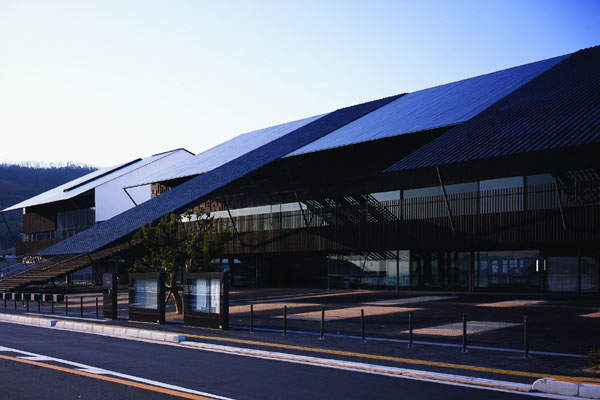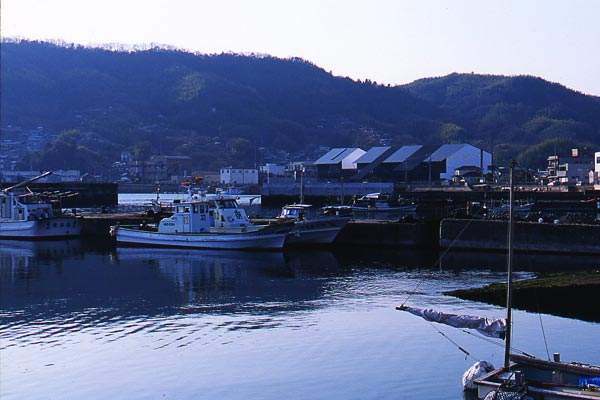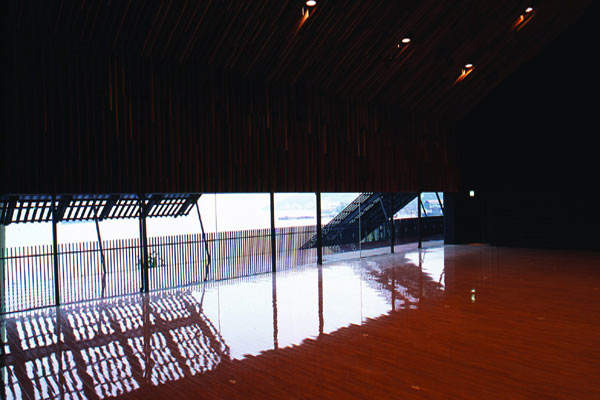The architectural theme in this project was to take the characteristic view of this area, which consists of roofs and tiles, and to incorporate it into the building. An attempt was made to bring the structure of the landscape into the detail of the roof.
The architecture aims to gently float up to the surface, while blending in with the environment. Although the scale of the Civic Centre is different from the houses around it, they still share the same materials – roof tiles – which form the buildings, and this is one of the strong points of Japanese tiled roofs.
The roof itself can be massive, but having the same make-up as other buildings can remove its sense of pressure. So from the very beginning an emphasis was placed on using authentic tiles. Authentic tile (plain rectangular tile and hollow semi-circular tile are used alternately) has a distinct grain, and when used as louvre, the space between tiles could be obscured.
Ondo Civic Centre was nominated for the Emirates Glass LEAF Awards in 2008 in commercial buildings category.
Civic Centre design and facilities
The Civic Centre includes a branch of the city hall, a community centre and a library.
Each facility has its own complicated function, but such difference could be accommodated under the same roof. Like a wide wrapping cloth, it allows flexibility – the roof does not merely cover what is beneath it, but can work on its own as a solid or porous facet. Louvres used in this architecture have two roles – the one is with the tiles as a border, and the other is as a membrane of the building, by applying louvres this way, even ‘wall’ could gain a certain kind of expression.
The Inland Sea of Japan is just down the site, presenting a feel of calmness to the visitors. A water conduit is also present within the project site. The ridgeline of the nearby mountains and islands facing the sea create a natural landscape to the Civic Centre.
The design of the civic centre was started in July 2004 and was completed after almost two years, in February 2006.
Materials
The entire structure of the building was clad in steel. The louvers were roofed with tiles for plasticity. Rectangular and hollow semicircular tiles were used in an alternate pattern. In the external wall the use of wood weight in the siding boards was partly excluded so that it could emphasise the three-dimensional look.
Using local materials was central to the design. Architecture should not be cut off from the ground, like a building designed and transported from elsewhere that has no relation to the site.
Construction
The project construction started in June 2006 ans was completed by December 2007. The three storey building has a total built up floor area of 4642.91m².
Contractors
The structural engineers were Oak Structural Engineering. All the mechanical engineering works of the project were executed by Morimura Associates.
Konoike/Nikko JV was the construction contractor. Rokko Electricity was contracted for electrical installations. Kinden was the contractor for ventilation works. Sanyo Kucho Kogyo supplied and installed the water supply and drainage systems.






